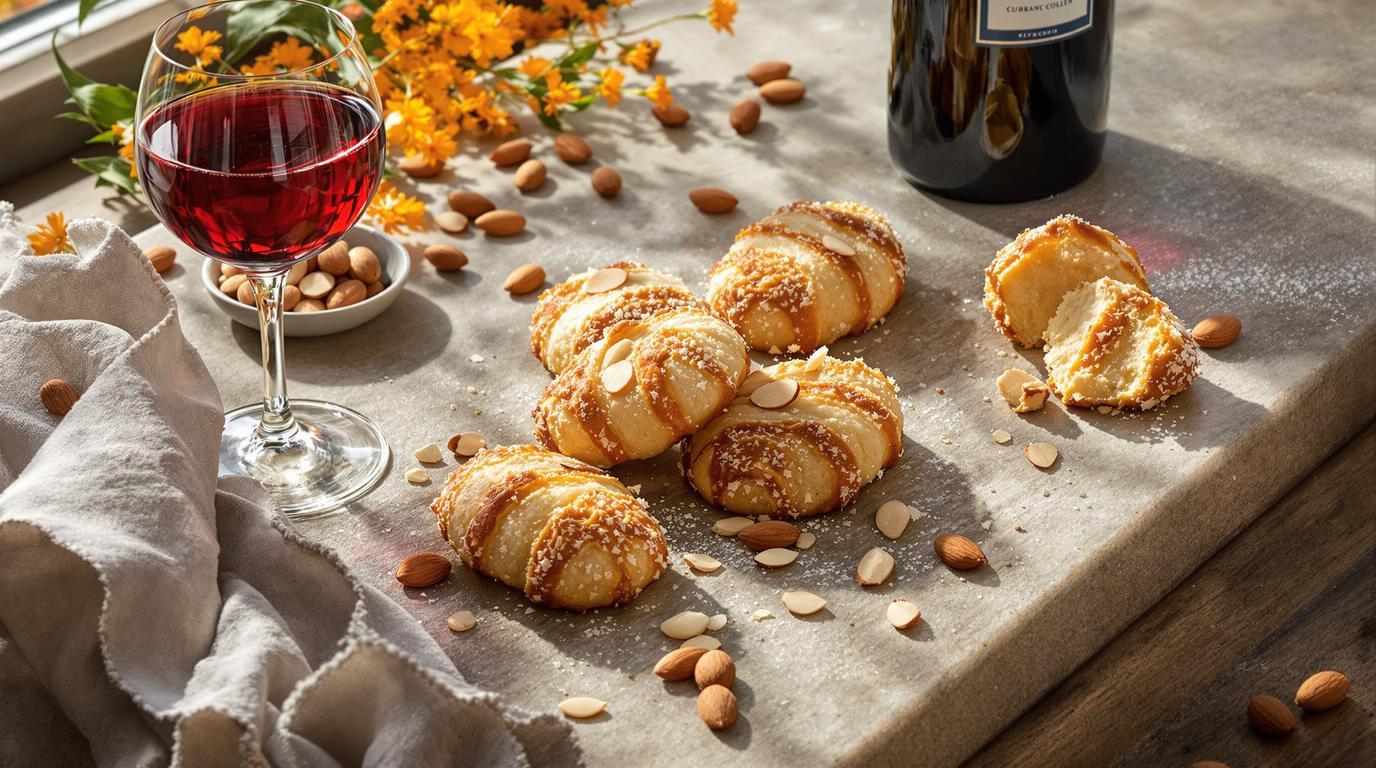The first time I encountered authentic Croquant aux Amandes in a small patisserie in Provence, I was mesmerized by its deceptive simplicity. These twice-baked almond biscuits seemed ordinary at first glance, but that initial crisp bite—followed by the rich nuttiness of toasted almonds—revealed their true sophistication. What surprised me most wasn’t just their addictive texture, but how dramatically different they were from their Italian cousins, biscotti. The French version has a lighter crunch that dissolves more readily, perfect for dipping in wine as locals do. After spending weeks perfecting my technique, I’m thrilled to share this heritage recipe that strikes the perfect balance between rustic charm and refined elegance.
The Story 📖
Croquant aux Amandes has deep roots in French culinary tradition, particularly in Provence where it often appears as part of Les Treize Desserts (the thirteen desserts) during Christmas celebrations. While clearly influenced by Italian cantucci, French croquants evolved into their own distinct creation, with regional variations that speak to local tastes. In Northern France, you’ll find simpler versions focusing purely on almonds, while Provençal renditions often incorporate subtle floral notes through orange blossom water—a technique I fell in love with during my time working in Marseille.
Ingredients Spotlight 🧪
The magic of Croquant aux Amandes lies in its perfectly balanced ratio of ingredients:
- 250g (8.8 oz) whole almonds, skin-on for best flavor
- 250g (8.8 oz) caster sugar
- 250g (8.8 oz) all-purpose flour
- 3 large eggs, room temperature
- 2 teaspoons orange blossom water (optional, for Provençal authenticity)
- Pinch of salt
The 1:1:1 ratio of almonds, sugar, and flour creates the perfect structure—too much flour makes them tough, while too many almonds prevents proper binding. For a gluten-sensitive variation, substitute 50g (1.8 oz) of the flour with almond flour, which adds richness while maintaining structure.
Step-by-Step Guide 📝
- Preheat your oven to 200°C (400°F) and line a baking sheet with parchment.
- Pulse half the almonds with the sugar in a food processor until coarsely ground, leaving the remainder whole for textural contrast.
- In a large bowl, whisk the eggs until frothy, then gradually incorporate the sugar-almond mixture.
- Fold in the flour and salt until just combined—overmixing creates tough cookies.
- Gently fold in the whole almonds and orange blossom water if using.
- Divide dough into two logs (approximately 30cm/12in long and 5cm/2in wide) on your prepared baking sheet.
- Bake for 15 minutes until golden and firm to touch.
- Remove and let cool for exactly 10 minutes—timing matters here!
- Reduce oven temperature to 150°C (300°F).
- Using a serrated knife, cut logs diagonally into 1.5cm (½in) slices.
- Return slices to the baking sheet and bake for another 15 minutes until completely crisp.
Chef’s Note: The 10-minute rest between bakes is crucial—too short and they’ll crumble when sliced; too long and they’ll be difficult to cut. I learned this timing precision from an 82-year-old patissier who hadn’t changed his technique in 60 years!
Expert Techniques 🛠️
The double-baking method is what gives these cookies their signature texture. The first bake sets the structure, while the second creates that perfect crisp exterior that shatters between your teeth. When grinding the almonds, aim for irregular pieces rather than powder—the variation contributes to the croquant’s rustic charm and provides textural interest. For a more contemporary twist, try substituting 50g of the almonds with pistachios, which add a beautiful color contrast and subtle flavor variation that pairs wonderfully with the bright citrus notes of a French fruit tart.
Presentation & Pairing Ideas 🍽️
Traditional French service calls for these croquants alongside a glass of sweet wine—I particularly recommend a Banyuls or Côtes-du-Rhône for an authentic pairing experience. The slight bitterness of the toasted almonds complements the wine’s sweetness perfectly. For a non-alcoholic option, a strong espresso provides the same satisfying contrast. These croquants also make an elegant accompaniment to a cheese plate featuring creamy French cheeses, or as a crunchy counterpoint to silky French potato purée and tender pot roast for a complete French dining experience.
Present these golden biscuits standing upright in a tall glass jar or arranged alongside Provençal tapenade and Korean bulgogi for an innovative fusion aperitif board. They’ll keep beautifully in an airtight container for up to two weeks, allowing you to prepare them well ahead of entertaining. Remember that true croquants should sound as good as they taste—the distinctive “crrrrack” when broken is how you know you’ve mastered the technique. Don’t be afraid to infuse your own personality into this classic—the best recipes evolve through personal interpretation while honoring their authentic roots.
